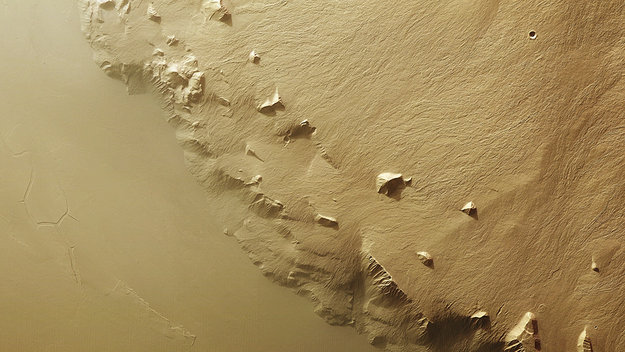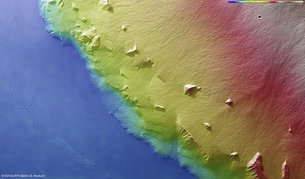www.esa.int-July 5,2013

Hundreds of individual lava flows are seen frozen in time on the flanks of Olympus Mons, the largest volcano in the Solar System.
The images, taken on 21 January 2013 by ESA’s Mars Express, focus on the southeast segment of the giant volcano, which towers some 22 km above the surrounding plains. This is more than double the height of Mauna Kea, the tallest volcano on Earth at 10 km, when measured from its oceanic base to summit.
Like Mauna Kea, Olympus Mons is a shield volcano, with gently sloping sides that extend outwards at low angles. But unlike other shield volcanoes, it has an abrupt cliff edge, or scarp, separating it from the surrounding plains.
The scarp circles the entire volcano, in places reaching 9 km high. It was likely formed during a number of catastrophic landslides on the flanks of the volcano, during which the resulting debris was transported several hundred kilometres beyond the extent of these images.
Lava flows cover the base of the volcano, punctuated by a handful of pointy and flat-topped blocks that were either rotated or uplifted during the collapse.



